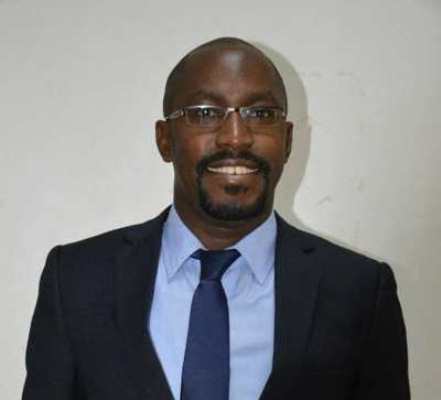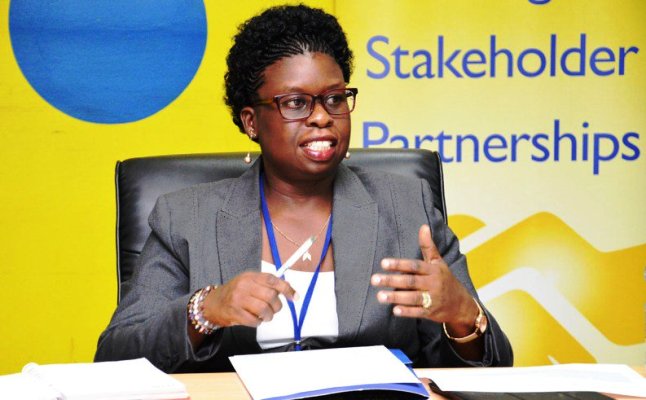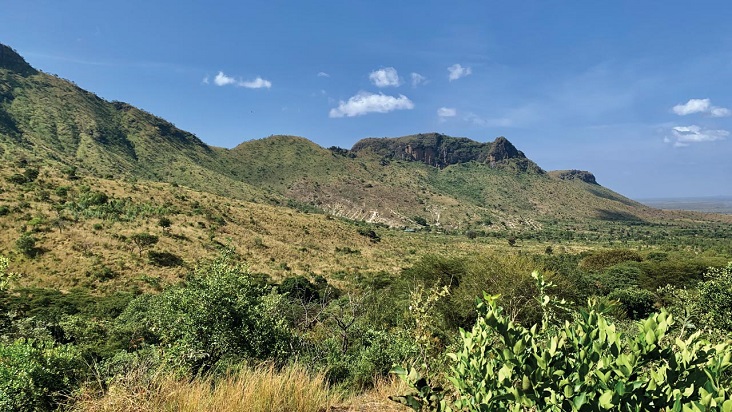Doris Akol (in featured photo) was first appointed Commissioner General of Uganda Revenue Authority in October 2014.
She was definitely headed for a daunting task considering the fact that she was replacing Allen Kagina, the ‘lady’ who had literally become the image of URA.
Under Kagina’s leadership, URA became one of the most reputable and best performing government institutions.
Against this background, some people wondered whether Akol, a lawyer, who had won URA many high profile court cases, was the right person to succeed Kagina.
However, those who knew her very well didn’t have any iota of doubt that she was going to do an excellent job.
Four years down the road, Akol has registered an impressive performance at URA, a thing that saw President Yoweri Museveni renew her contract for another four years.
She started her second four-year tenure at the helm of the tax body on November 1, 2018.
Business Focus interviewed Ian Rumanyika, the Acting Commissioner Public & Corporate Affairs at URA, to put into perspective Akol’s performance in the last four years and her priority areas during her second term in office.
Rumanyika reveals that over the past four years, total gross revenue collection has exceeded Shs48.7 trillion which is an average of over Shs12 trillion per annum or Shs1 trillion per month.
Akol has been able to grow revenue collection from a mere Shs9.7 trillion in FY 2014/15 to Shs14.5 trillion in FY 2017/18, indicating an absolute growth of Shs4.8 trillion.
It is important to note that during this period, Uganda’s economy hasn’t been performing well as evidenced by slowed economic growth.
“As a result of increased revenue collection, the tax to GDP has improved from 12.33% to 14.33% by the end of FY 2017/18. Additionally, the tax to national budget ratio has improved from 69.04% to 73.9% in FY 2016/17 and 71.5% in 2017/18,” Rumanyika said.

Regionally, during the last four years, the URA revenue growth has been the highest in the East African Community (EAC) region at 15.1% ahead of the runner up, Tanzania Revenue Authority at 13.1%, Kenya Revenue Authority at 10.8%, Burundi Revenue (OBR) at 8.4% and Rwanda Revenue Authority at 12.8%.
URA Revenue Contributions to Budget Framework
| Revenue metric | FY 2014/15 | FY 2015/16 | FY 2016/17 | FY2017/18 |
| Net revenue (UGX Bn) | 9,715.6 | 11,230.9 | 12,719.6 | 14,456.11 |
| Tax to GDP Ratio (%) | 12.33 | 13.51 | 14.05 | 14.33 |
| Tax to Budget (%) | 69.4 | 60.2 | 73.9 | 71.5 |
Source: URA Databases and MoFPED Databases 2018
It is important to note that at the beginning of the FY 2014/15 when Akol assumed office, the total number of registered taxpayers was 632,379.
However, the end of FY 2017/18 saw an increase in this number to 1,320,691 taxpayers.
In that period, 688,312 additional taxpayers were brought on board, representing a growth in the register of 108.8%.
With the informal sector estimated to cover up to 49% of the country’s economy, Rumanyika reveals that AKol and her team devised programs to ensure that penetration into the sector is bolstered.
He says this performance was boosted by various initiatives over time including the Tax Registration Expansion Program (TREP), robust tax education and sensitization campaigns, and block management among others.
“URA has since collaborated with local governments, Kampala Capital City Authority (KCCA) and the Uganda Registration Services Bureau (URSB) to formalize businesses. URA has deployed staff at One Stop Shops (OSS) in over 34 municipalities. As a result of this, taxpayers now register their business name, acquire trade license and register for taxes under the same roof. 688,312 taxpayers have been added onto the URA tax register in the 4 years, partially due to TREP,” he says.
Among the many initiatives and programs URA has put in place, Operationalizing the One Stop Border Posts (OSBPs) is one of them that has greatly eased trade.
Four out of the six OSBPs in Uganda are operational; these are Malaba, Busia, Mirama Hills and Mutukula.
“This has translated into reduced turn-around time from 3 days in FY 2015/16 to 2 hours in FY 2017/18; improved coordination among government agencies; establishment of cross border information desk; decongestion of customs stations and improved working environment for staff and stakeholders,” Rumanyika said of the benefits of OSBPs.
Over the past four years, URA has also embraced the Regional Electronic Cargo Tracking System (RECTS), a web-based integrated system for monitoring transit cargo under customs control.
This was launched in February 2017 to eliminate challenges such as lack of holistic end to end transit monitoring mechanism that were leading to cases of dumping, delayed bond cancellation and refund processing.
The implementation of RECTS has seen 20% of the cargo subjected to e-monitoring and resulted into reduced transit time from 6 to 3 days for regional, and 3 to 1.5 days for national transactions, improved truck turnaround time from 4 to 8 trips a month and suppressed transit diversion and improved trade facilitation.
Other key trade facilitating initiatives URA has put in place include the Centralized Document Processing Centre (DPC), implementation of National Targeting Center (NTC), the Uganda Electronic Single Window (UESW), Electronic Issuance of Certificates of Origin, and Implementation of the Single Customs Territory and Authorized Economic Operator (AEO) among others.
AEO’s are compliant taxpayers who are rewarded with priority treatment at all times with pre-arrival cargo clearance, self-management of bonded warehouses, choice of place of physical examination of cargo, automatic renewal of Agency licenses for being compliant tax payers.
“By the FY2017/18, 36 AEO companies had been licensed and the cost of doing business subsequently reduced. In addition, there was enhancement in the mutual recognition while operating within the EAC Regional member states,” Rumanyika says.
URA House
Under Akol’s leadership, URA building project was launched on 30th October 2014 to construct a new URA home.
The 22-floor building is divided into four podiums and eighteen tower floors totaling to 26,021 square meters.
At peak, in 10 years’ time, the building will accommodate up to 1,700 staff. The total project is Shs139 billion and has been constructed over a period of 36 months, with a post construction defect liability period of 12 months.
“The overall objective of the Project is to provide infrastructure for better service delivery and the strategy is to have all URA back office operations in Kampala, Mukono and Entebbe converge at Nakawa in the HQs building,” Rumanyika said.
He added: “This is expected to reduce the cost of doing business for taxpayers through provision of one- stop-service-centre and savings on rent, transport, ICT connectivity, security, and courier services, for URA. It is envisaged that only tax information centers will remain operational in central Kampala and its environs after the closure of the main tax of offices in Kampala East, North, Central, Entebbe and Mukono.”
Glance Into The Future
According to Rumanyika, Akol and her team will in the coming four years focus on exhibiting more resilience and commitment to unprecedented revenue mobilization, scaling heights of tax collection, trade facilitation and increasing domestic revenues.
He noted that tax education toward building a taxpaying culture will remain key in Akol’s second term.
“We shall build on the existing successes to ensure that comprehensive Tax Education strategies that penetrate in the core fabric of the compliance behaviors of taxpayers and non-taxpayers are attained through optimization of technology and tailored approaches,” he says.
He adds that URA will continue to strengthen strategic partnerships.
“Cognizant of the fact that tax administration is an enormous task; we shall develop and implement comprehensive stakeholder management programs, strengthen relations with other Government agencies to conduct joint enforcement operations and support the implementation of legislation – all geared at improving tax compliance,” he revealed.
He added that URA has established a Tax Academy that will be the ‘go to’ Tax Academy “for progressive tax training and competence development in the region, characterized by innovative and self-directed learning models that create value to both the individual and institution.”
He further noted that business process efficiencies that manifest in simplicity, responsiveness to clients, are client solution driven and inspired by an attitude of service will be more visible going forward.
“In this, we will roll out service models that will further empower the taxpayer, through business integration, to seamlessly and securely interact with URA with no need for physical interfaces,” Rumanyika said.
He added: “We will deploy more focused methods of knowing our clients and providing solutions to them. This will be manifested by among others, automated self-service counters, to enable self-declarations and targeted business advisory and tax literacy engagements.”
URA will also embrace technology enabled holistic border management and surveillance for revenue protection and border security.
Rumanyika also noted that URA will put in place a robust customs management system that will include; automated and non-discretionary valuation systems and a reformed and comprehensive warehousing regime that increases Uganda’s competitiveness as a land linked regional logistics hub.






